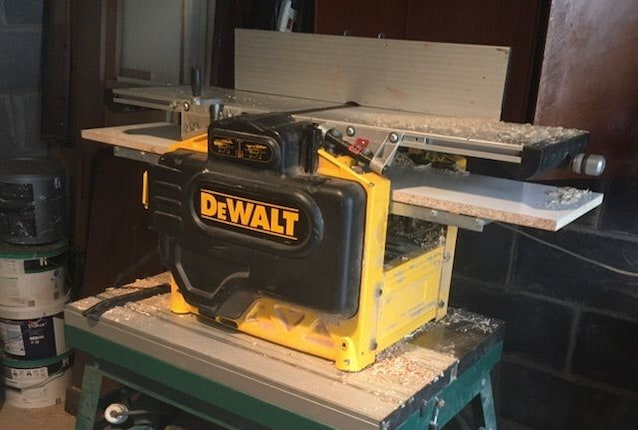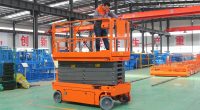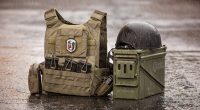The Whats and Hows of Planer Thicknessers: Ensure Accurate Cuts with Every Pass
Woodworking can be a fun hobby or a full-time job paying the bills, Either way, you’ll want the right tools for each task you come by. A tool that sees early action and at the beginning of almost every job where stock timber is involved is the powered planer thicknesser. This does exactly as it says on the box, that is, it planes and smooths all types of boards and planks to a consistent thickness and width, removing imperfections in the wood grain with each pass. Boards come out straight and ready for use.
Having such a tool saves you quite a bit of time and money. Along with jointers and hand planes, thicknessers remove excess materials fast and allow you to use less-than-perfect timber to begin with. Once the boards are brought to the right dimensions, you can get on with the job at hand.
How Planer Thicknessers Work
All thicknessers work roughly the same way, regardless if this is a smaller benchtop variant or a larger standalone unit. Parts are common in all types. This includes a set of in-feed rollers that push planks at a designated speed along a (height adjustable) table and a cutter head sitting perpendicular to the table bed and taking off a specified amount of material in each pass. The boards are pushed out of the machine through a set of out-feed rollers.

More About the Parts
The table bed is the smooth surface on which boards are placed. In a smaller benchtop planer thicknesser, table beds are at a fixed height, meaning cutting depths are changed by changing the height of the cutter head located above. In larger types, the table head is fixed, whereas the cutter heads are adjustable. A minor difference, but there’s slightly more control and precision in larger thicknessers. To aid users when working with longer and larger boards, table beds can be equipped with bed extensions.
The cutter head is what strips excess material off the wood. This can consist of two or more cutting blades and in different metals and alloys, from High-Speed Steel (HSS) to extra-tough Tungsten carbide. Possibly more important is the width of the cutter head, ranging anywhere between 300 to 600mm (or more), since this determines the size of the board you can work with. Another thing to go by is the height between the bed and cutter head when you want to work with thicker or bent boards.
There’s some variation in the in-feed and out-feed rollers too. Smoother rollers made of neoprene or steel lead to fewer marks in the wood and are usually found in smaller portable planer thicknessers, whereas serrated rollers are better in faster work and with bigger boards. These are commonly found in a standalone planer thicknesser.
Other parts are about usability, safety, and speed. For instance, feed speed controls let you vary the speed as the boards go through the thicknesser; depth-of-cut gauges let you experiment with cutting depths and board thicknesses; emergency stop buttons increase safety and locking mechs get cleaner and more precise finished board dimensions.
Advantages of Planer Thicknessers
Planer thicknessers are indispensable tools that offer numerous benefits. Using one will allow you to:
- maintain the straightness of both sides of the board
- cut any type of soft or hardwood to any thickness
- create boards with a parallel surface
- change the cutting depth and thickness quickly
Smaller units are also relatively lightweight (around 25 kilos) so can also be regarded as portable and won’t look out of place in a ute toolbox.

What to Look for When Buying
Choosing your next planer thicknesser will be based on your budget, your woodworking needs, and where the thicknesser will be used. Smaller benchtop thicknessers should be more than enough for all DIY work, as well as any lighter commercial planing tasks. This is assuming you’re using standard-sized boards. Heavy-duty tasks that will see thicknessers working for the better part of the day and clearing and planing larger planks are better handled with industrial thicknessers.
Have in mind that these take up quite a bit of space and are power-hungry. And they’re considerably more expensive. Related machines, like a combo planer and jointer are needed when irregular-shaped boards are to be flattened first. With that being said, here are the key factors to consider in your next thicknesser:
- Planing width and depth – These factors determine the size of boards you can work with. Benchtops thicknessers are comfortable smoothing and planing boards that are up to 350mm wide, whereas larger units will happily work through boards exceeding 600mm. The planting depth is how much wood the thicknesser removes in a single pass. 3mm seems to be the max rating for smaller types, and larger thicknessers can go deeper and remove more imperfections quicker. Ultimately, planing depth will also affect speed, especially when using larger boards. Related is thicknesser capacity or the height of boards the machine can handle. Here, smaller thicknessers top out at around 150mm.
- Feed speed and motor wattage – The speed at which boards are fed into the machine attests to both the variable speed settings and how tough the motor is. More watts generally mean faster workflow and less strain on motors. This though also means a pricier thicknesser. Stick to around 1800W in benchtop variants for a decent balance between price and performance.
- Build and materials – The materials used in the table bed, the cutter knives, and the rollers all impact the quality of the finish on the boards. They also mean that you get a woodworking machine that won’t budge under heavy use and delivers consistent results each and every time. Go for established brands in the woodworking tool business to get something that performs as advertised and lasts. Blades in particular will see the most wear and these should be easy to find and even easier to replace. Also, check out warranty lists.



